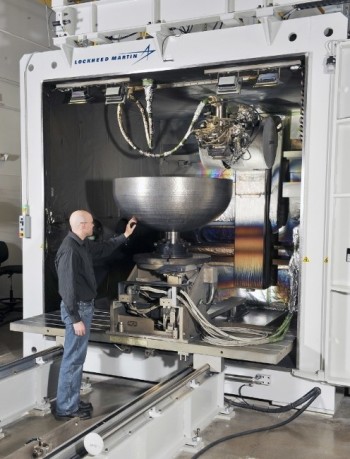
Sciaky has announced the introduction of a closed-loop control system named IRISS for its electron beam additive manufacturing (EBAM) system.
Why is that a big deal? Well the answer is hidden within the acronym itself. IRISS stands for interlayer real-time imaging and sensing system. In essence, IRISS gives EBAM operators the ability to have constant process control of the mechanical properties, microstructure, chemistry and geometry of the parts that they’re building.
Although that might seem like a must-have for any production technology, for metal additive manufacturing (and other traditional metal production methods as well), maintaining tight control over all of those critical variables is oftentimes more of an art than a science— let alone the fact that it might not be possible at all.
Take, for example, direct laser metal sintering (DMLS). One of the biggest problems facing DMLS is that users find it difficult to maintain material property repeatability because controlling the melt pool of material used to create geometry is complicated. When melt pool control can be brought in line, users have likely undertaken a time-consuming and expensive optimization process. That can take the rapid out of rapid prototyping.
And that’s one of the reasons that Sciaky’s news is such a big deal.
See, EBAM isn’t like DMLS. Rather than using a powdered material and a laser, EBAM systems operate in a manner that’s more akin to fused deposition modeling. In an EBAM system, metal feedstock is fed into an electron beam weld head and deposited layer by layer to build geometry. Because of its underlying technology, EBAM users can leverage a closed-loop control system and realize greater control than their laser-sintering counterparts. What’s most interesting is that it’s not just Sciaky singing the praises of its technology, aerospace giant Lockheed Martin is also excited about EBAM technology, especially with the new IRISS upgrade.
Read more at ENGINEERING.com

